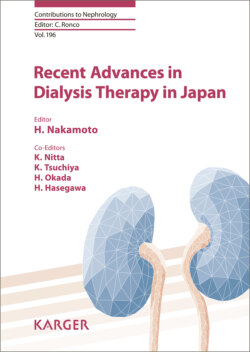Читать книгу Recent Advances in Dialysis Therapy in Japan - Группа авторов - Страница 27
На сайте Литреса книга снята с продажи.
Conclusions
ОглавлениеThe incidence of SCD in ESKD patients has not decreased as much as expected given the improvements and developments in cardiovascular disease medicine. For instance, the prevalence of coronary artery disease, which would be one of the major causes of SCD, has decreased in parallel with the increased use of cardioprotective medicines in these last decades in ESKD patients [32]. On the other hand, a dialysate calcium concentration of 3.0 mEq/L (1.75 mmol/L) was popular until the use of calcium-based phosphate binders and vitamin D analogues resulted in hypercalcemia; consequently, the use of a lower dialysate calcium concentration increased [33]. It is undeniable that this change causes a higher frequency of QT prolongation after HD, resulting in a high frequency of triggers of the onset of fatal ventricular arrhythmias and SCD. Until now, the selection of dialysate calcium concentration has been considered in direct relation to the management of complications and/or the parameters of bone mineral disorder. We should pay more attention to dialysate contents as having a great impact on secondary QT prolongation. In order to reduce the incidence of SCD in ESKD patients, further study is needed to determine which combination of calcium, potassium, and bicarbonate concentrations in the dialysate is optimal to reduce the incidence of SCD in high-risk HD patients.
